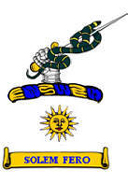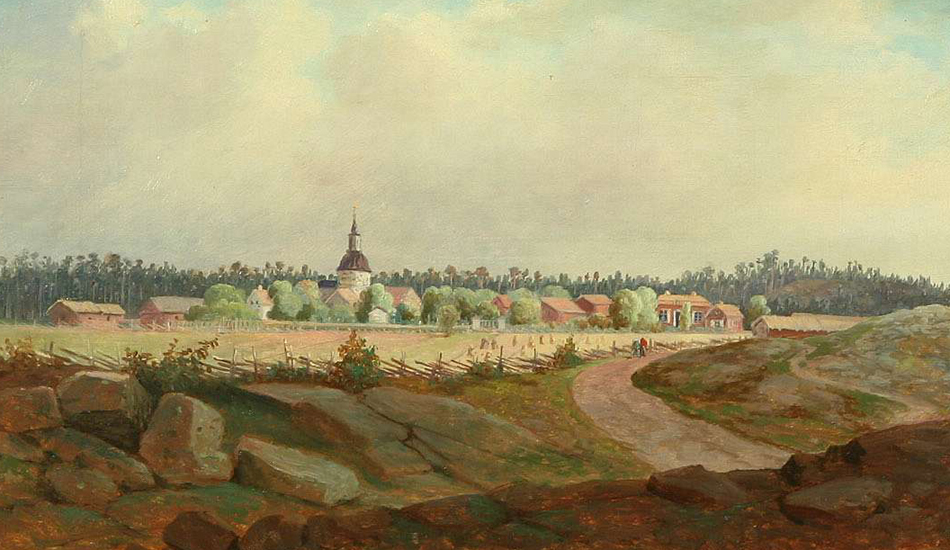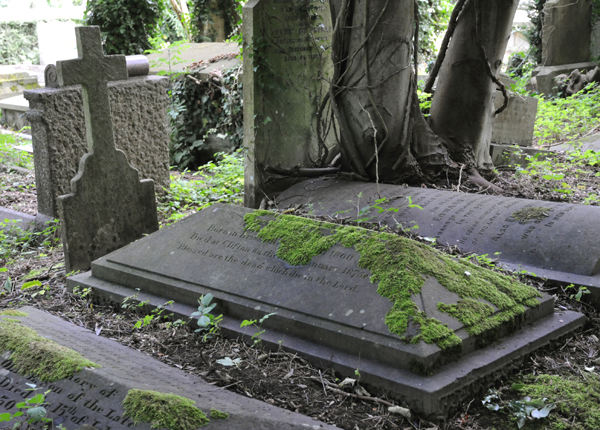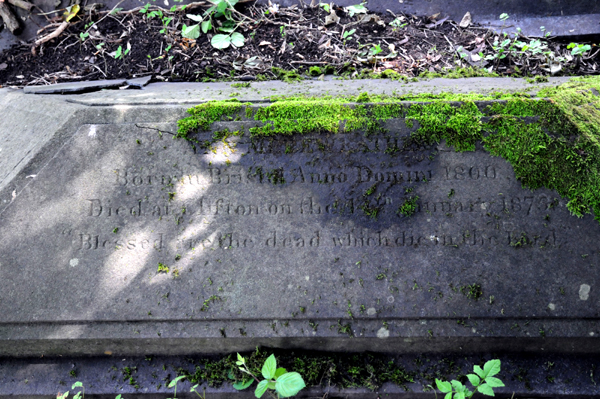|
Mereweather was appalled by the conditions for
burying non-Catholics in Venice. Already in Semele,
published in 1867, he lets the heroine, visiting the Lido,
express her dismay at the desolate and unenclosed tombstones
of British Protestants who had been denied the privilege of
being buried in consecrated ground. He also criticizes the
British Government for not being paternal enough to obviate
such an indignity. (Mereweather adds that, at a
comparatively recent date, the mortal remains of the
entombed, but not the stones, had been removed to a
Protestant cemetery.)
Over the years, Mereweather made several attempts to remedy
the situation. The municipality had repeatedly offered to
provide a suitable ground but the promises were never kept.
In 1879, in connexion with the appointment of a new British
consul, he wrote to the Foreign Office asking for
assistance. He said that the available (German) cemetery had
"become so disgustingly full that the burial of fresh bodies
frequently necessitates the exhumation of long interred
remains". The only answer he received was that the new
consul was free to use his influence in the matter.
This correspondence can be found in the Public Record
Office, London, FO 45/394.
(By then, Mereweather had already
secured a grave for himself in Sweden; see below.)
The situation in Venice would have troubled Mereweather
personally when he thought of his own future burial.
And what was happening in Bristol
would not have been to his liking either. Mereweather's
half-brother Samuel and father John had both been buried
in vault No. 70 in the church of St Werburgh, in 1839
and 1845 respectively. But this resting place was soon
to be destroyed.
In 1871, Bristol City Council proposed that the
church of St Werburgh, whose congregation was dwindling,
should be moved to one of the suburbs in need of a
church. This would also mean a great improvement in the
city with the widening of Corn Street and Small Street.
The matter was much debated, and, finally, in 1877 a
decision was made and most of the site was sold to
London and South Western Bank. John Latimer describes
how bodies buried in and below the church were treated:
The church "was taken down in the spring of 1878, when
forty large chests of human remains, and about a hundred
leaden coffins, were removed to Greenbank Cemetery ...
... The foundations of the new bank were carried down to
an unusual depth, and bones were found at such a
distance from the surface as to lead to a belief that
the cemetery of the original church was fully twelve
feet below the level of the fifteenth century edifice."
(The Annals of Bristol in the Nineteenth Century,
Bristol 1887, p. 461). The church itself was rebuilt in
Mina Road, some 2.5 km to the north-east (the building
is now a rock-climbing centre).
Mereweather’s neighbours, in Palazzo Contarini Corfù,
were George Frederick Greaves, late Captain of the 60th
Rifles, rentier, his wife Ann née Richards and their
large family. On 3 June 1871, one of the Greaves
daughters, Adela, got married to a Swedish lieutenant,
Carl Edward Arfwedson, for whom banns had been read in
Stockholm one month earlier. Their marriage was
performed by Theodor Elze, priest in the German
Evangelical Church in Venice. Mereweather and Richard
Atkinson were witnesses. (There is a marriage
certificate in the National Archives in Stockholm.) The
young couple left Venice for Sweden.
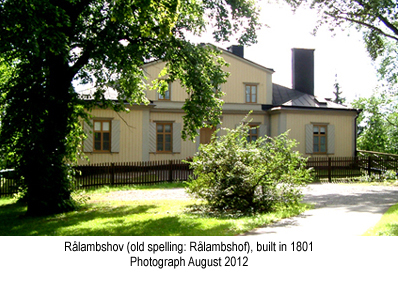 In
the summer of 1877, if not before, Ann Greaves, decided to visit her
daughter and son-in-law in Stockholm where there were
now also three grandchildren. Mereweather accompanied
her on the trip. Adela and her family lived at
Rålambshov on the outskirts of Stockholm. Tragically however, on 27 August 1877 Ann
Greaves died of organic heart disease (vitium
organicum cordis according to the parish register of
Kungsholm). She was buried three days later in a new
grave, No. 2760, in Stockholm's Northern Cemetery; the
arrangements were made by Carl Edward Arfwedson, her
son-in-law. In
the summer of 1877, if not before, Ann Greaves, decided to visit her
daughter and son-in-law in Stockholm where there were
now also three grandchildren. Mereweather accompanied
her on the trip. Adela and her family lived at
Rålambshov on the outskirts of Stockholm. Tragically however, on 27 August 1877 Ann
Greaves died of organic heart disease (vitium
organicum cordis according to the parish register of
Kungsholm). She was buried three days later in a new
grave, No. 2760, in Stockholm's Northern Cemetery; the
arrangements were made by Carl Edward Arfwedson, her
son-in-law.
On the day of the burial, on 30 August 1877, Henrik
Gerhard Arfwedson, younger brother of Carl Edward,
bought grave No. 2761 for 100 Swedish kronor (£5 10s.). According
to a transcript of the deed (in the National Archives in
Stockholm),
this grave was transferred to John Davies Mereweather on
3 September 1877.
All this happened within one
week. Thus Mereweather decided to secure
a plot for himself next to Ann Greaves's grave. He
undoubtedly had great affection for her, but he would
also have seen a solution to the problem with his own
burial which had tormented him for so long.
On 16 July 1878 Mereweather, being a British and not
a Swedish subject, applied, through the Department of
Justice, for the approval of the transfer to him of the
grave deed. His request was granted by a Royal
resolution of 2 August 1878, and on 5 September 1878 the
cemetery administration registered the grave in
Mereweather's name.
In 1880 Mereweather made a payment of 400 kronor (£22)
for the perpetual upkeep of his grave.
In his will Mereweather had
written, "… at my decease unless there be many and great
obstacles my body shall be cremated and my ashes
conveyed to Stockholm the capital of Sweden where in the
Cemetery there is a grave belonging to me in perpetuite
numbered 2761 in any case my body if not my ashes must
be conveyed to the said grave …".
Mereweather feared that his
wishes regarding cremation would not be respected.
Therefore, in early1888, he became a member for life of
Svenska Likbränningsföreningen (The Swedish Cremation
Society) so that, if necessary, his remains could be
cremated in Sweden before burial there. This was
reported in several Swedish newspapers, and
Aftonbladet
adds on 2 March: "The old man has allowed that this is
brought to the public's attention in order thereby to
contribute, according to his ability, to the success of
the human cremation reform."
But Mereweather's
worries were unfounded. When he died, nineteen years
after the purchase of his grave, his body was indeed
cremated, and the ashes were sent to Sweden with an
affidavit issued by the Norwegian-Swedish consul in
Venice. Grave No. 2761 was finally opened to be ready
for the burial by 1 p.m., Tuesday 28 July 1896.(The practice of human cremation emanated mainly from
Italy where experiments had started around 1870; professor Brunetti of Padua had showed his results at the exhibition
in Vienna in 1873. See
Modern Cremation, its History and Practice (London,
1889) by Henry Thompson.)
It should be mentioned that, although the family vault in St
Werburgh's was doomed to destruction, there would
have been a Bristol burial option: the Arnos Vale cemetery
situated in Brislington, some 3 km south-east of the
city centre.
In 1875, Mereweather's
half-sister Ann had been buried there in grave No. J143.
However, neither Mereweather himself nor Ann had surviving
Bristol family, so he may have been concerned about the
preservation, especially as Arnos Vale was run by a private
company for profit (as distinct from the Stockholm cemetery
which is run by the municipality).
For recent pictures of Arnos Vale, see below.
In Stockholm on the other hand, Mereweather had his heirs: Carl Edward Arfwedson and his children; one of the children was
Mereweather's godson Jacques Arfwedson. Today, one of Jacques's
grandsons is registered in the database as
contact person for grave No. 2761. And the contract for the
perpetual upkeep is still honoured by the cemetery
administration. Mereweather could hardly have made a
better choice for an
eternal resting place. |
